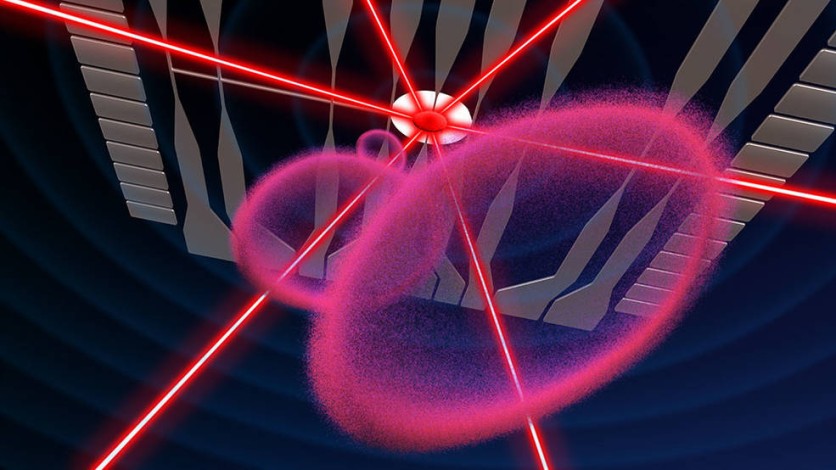NASA has a history of documenting and contending with how liquids behave differently in microgravity compared to how they act back on Earth. They have long observed that water droplets merge into floating spheres rather than becoming heavy droplets.
But now, researchers have found a way to replicate this effect by controlling an ultracold gas (minus 459 degrees Fahrenheit or minus 273 degrees Celsius) and manipulating it into any shape!

Shaping the Gas
With the help of NASA's Cold Atom Lab, the very first quantum physics facility in the International Space Station (ISS), scientists drew samples of atoms cooled to an insanely millionth of a degree above absolute zero and shaped them into extraordinarily thin and hollow spheres.
According to NASA's press release, the cold gas was first shaped in a "small, round blob" that looks like egg yolk and is sculpted afterwards into the shape of a thin eggshell. Trying this on Earth would be rendered impossible since the atoms pool downward, shaping into a contact lens instead of a bubble.
This discovery is a milestone in its own merit since shaping a bubble is only plausible in the microgravity environment found on the space station, according to the paper published on Wednesday, May 18.
The Cold Atom Lab was tightly responsible for shaping these ultracold bubbles, thanks to their tightly sealed vacuum chamber, they were able to use magnetic fields to form the gas into various shapes. What's even cooler is the fact that the lab is only the size of a minifridge!
These ultracold bubbles can also be experimented with an exotic material - which is the fifth state of matter that is different from gasses, liquids, solids, and plasmas- it is called the Bose-Einstein condensate (BEC). This matter gives scientists the chance to observe an atom's quantum properties through the naked human eye.
For example, if atoms and particles behave like solid objects or sometimes act like waves, this will be called a "wave-particle duality," which you can view with your naked eyes!
David Aveline, lead author of the experiment and a member of the Cold Atom Lab, said that "these are not like your average soap bubbles," and that there is nothing in nature that gets as cold as the atomic gasses found in the lab.
"So we start with this very unique gas and study how it behaves when shaped into fundamentally different geometries. And, historically, when a material is manipulated in this way, very interesting physics can emerge, as well as new applications," she said in a statement published by NASA.
Read Also : Stars Generate Key Ingredient of Life Found in Humans - Scientists Tried Cooking this Ingredient!
The Coolest Quantum Breakthrough
These experiments conducted on the ISS using the Cold Atom Lab give an opportunity for scientists to reverse the effects of gravity, which is a formidable force that influences the behavior and motion of fluids. Through this, they can acquire a better knowledge on the factors at play, including a liquid's surface tension or viscosity.
Since NASA's scientists have been able to generate these ultracold bubbles, they could very well be of their way to shaping bubbles in their BEC states and finding how it behaves.
According to Nathan Lundblad, one of the principal investigators of the study, bubbles in the BEC state could form vortices like little whirlpools in the quantum material.
It is worth noting that advances in quantum science have led to the creation of modern technologies such as transistors and lasers. While quantum investigations in Earth orbit bring in new opportunities for spacecraft navigation systems and sensors. With this new study, they could be one step closer to exploring the full "quantum nature of matter."
Related Article : NASA Captures Fall of a Colorful Swirl Into Milky Way's Black Hole
This article is owned by Tech Times
Written by Joaquin Victor Tacla




